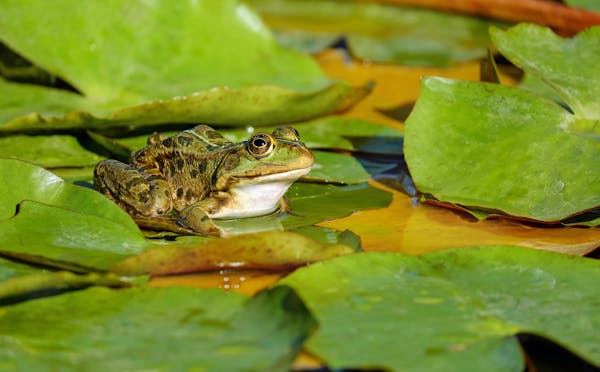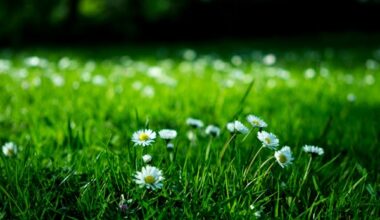Ever thought about what happens when you put salt on a frog? It might seem interesting, but the truth is quite alarming. Salt can harm aquatic life, especially amphibians, in big ways.
In this blog, we’ll look into how salt affects frogs and other water creatures. We’ll see why it’s important to avoid this experiment.
The Overlooked Threat of Road Salt Pollution
Road salt is often used to clear snow and ice from roads but poses a big threat to our environment. When it gets into fresh water, it harms aquatic ecosystems and the homes of frogs and other amphibians.
This piece will look into how road salt pollution affects wetlands and other sensitive areas. Using a lot of road salt has led to a big pollution problem in many water bodies. Research shows that this can make breeding ponds too salty.
This can cause adult wood frogs to swell up, which is bad for their health. In northern areas, the need for de-icing makes the road salt problem worse. This means amphibians face more challenges as they try to survive in a changing world.
Road salt contamination does more than just harm water animals. It can lead to the death of up to 1 million animals every day in the U.S., especially amphibians. Losing these species can greatly harm our environment’s health.
We need to act fast to stop road salt pollution. By understanding its effects on water ecosystems, we can find better ways to protect our environment. This will help keep the animals that live in these areas safe.
Rapid Evolution: How Wood Frogs Are Adapting to Salty Environments
Researchers led by Professor Rick Relyea have made a surprising find. They discovered that some frogs, like the wood frog, can now handle more saltwater after just 25 years. This change happened because of more road salt in their homes.
The Remarkable Findings of Professor Relyea’s Research
Professor Relyea looked into how wood frogs can handle salty environment. He took eggs from nine ponds in New York with different salt levels. Amazingly, tadpoles from the saltiest pond were still alive after 96 hours, with 60% of them.
But tadpoles from ponds with less salt didn’t make it past two days. This shows that the more salted frogs are exposed to, the more they can handle it over time.
Amphibians’ Vulnerability to Salt Pollution in Wetlands
Wood frogs can adapt to salty places, but they can’t live in very polluted wetlands forever. These frogs are very sensitive to salt in their homes. This is why we need to find ways to reduce salt contamination.
Professor Relyea’s study shows we must look for safer alternatives to road salt. We need to take care of our wetlands to protect frogs like the wood frog.
Bloated Frogs: The Surprising Effect of Road Salt
When you think about road salt, you might not link it to bloated wood frogs. However, research shows a surprising connection between the two. It turns out, this common winter de-icer affects these amphibians in a big way.
Physiological Mechanisms Behind the Bloating
Wood frogs can store water in their bodies to avoid freezing in winter. But road salt is messing with their ability to get rid of this water in spring. This makes them look like big, swollen water balloons.
The reason for this is how road salt changes the balance of water and ions in the frogs. It messes with their ability to keep fluids in balance. This leads to the bloating seen in areas with a lot of road salt.
Learning about how road salt affects these frogs is key to solving the bigger issue of road salt water pollution. By understanding how frogs adapt and how saltwater harms them, we can find better ways to protect them and their homes.
Impacts on Mating and Survival: Consequences of Bloating
Road salt pollution harms wood frogs in many ways, not just by changing their bodies. The bloating from too much salt water affects their mating and survival. Bloated males find it hard to hold onto females during mating, which makes them less competitive.
They also move slower and are easier prey for predators, raising their risk of being eaten. A study looked at 38 wood frog populations in New England. It found that frogs near salted roads got bloated more often.
These frogs had trouble losing the extra water and shedding the weight, which could hurt their chances of reproducing and surviving. But, female wood frogs near roads have adapted to the salt water. They jump farther and lay more eggs.
This shows that road salt contamination affects wood frogs in complex ways. Some frogs adapt, while others face big challenges.
Bloating is a big problem for wood frogs. It makes them move slower and more likely to get hit by cars or eaten by predators. With more road salt being used, we need to find ways to protect these frogs and other aquatic animals.
What Happens When You Put Salt On a Frog
Road salt contamination can cause frogs to swell up. But it does more than just make them look different. Studies show that too much salt in wetlands harms frogs, causing birth defects and making it harder for them to survive.
Putting salt on a frog is not only cruel but also harmful. It can lead to serious health issues. For example, a frog can get sick from a salt bath with 6 grams of sodium chloride per liter. This can hurt its tissues and mess with its cells.
The chytrid fungus that attacks frogs likes saltwater too. It grows well in low salt levels, up to 6.25 milligrams per milliliter. Some think saltwater might kill this fungus, but it’s not clear if it works once a frog is already sick.
Too much salt in wetlands harms frogs and their homes. Frogs are already in trouble due to many problems like pesticides, losing their homes, climate change, and contamination. Adding road salt makes things worse, causing more frogs to be deformed and die.
We need to stop harmful experiments and focus on safe research. We should learn how road salt contamination affects frogs and other animals. This way, we can find better ways to protect them and their homes.
Adapting or Maladapting? The Complex Responses of Frogs
Wood frogs show a complex reaction to road salt contamination. Some populations adapt quickly, with females near roads jumping better and laying more eggs. But others become “maladapted,” showing more deformities and dying off.
This shows that the effects of salt on frogs can vary a lot. It depends on many environmental factors. Knowing these differences is key to fixing the damage from road salt runoff. Small amounts of saltwater can help some frogs by stopping a deadly fungus. But, too much salt water can make them smaller and affect their growth.
Young frogs can handle some salt, performing as well or better than those in freshwater. This shows that some frogs can adjust to salt contamination. It’s a complex way that frogs deal with environmental stress.
Understanding how frogs react to changing salt levels is important. This is what tadpoles face in the wild. How they handle these changes is key to their growth and survival.
The impact of road salt on frogs varies a lot. Some frogs adapt, while others don’t. To fix this, we need to understand these complex reactions well. We must also think about the trade-offs between fighting diseases and how it affects young frogs.
Conclusion
The study on road salt’s harm to frogs and other water creatures is a call to change our ways. We need to look at our road salt management methods and make them better.
Learning how amphibians adapt and react helps us make better policies and practices. This shows how crucial it is to protect our environment and find sustainable solutions. We must act fast to lessen the harm from road salt.
We all need to work together to make policy changes and reduce pollution. The fate of frogs and other species reminds us of the need for a greener way to keep roads safe. It’s time for a change in how we handle winter road maintenance.


